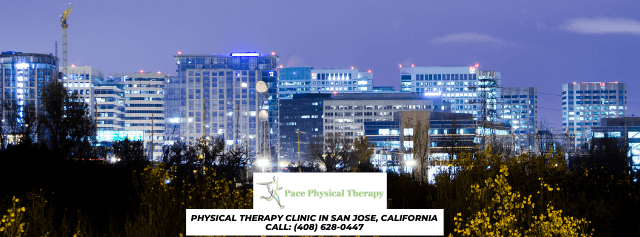How Do I Relieve Sciatic Nerve Pain?

Sciatic nerves go back to your lower legs. If you press something like a slipped disk or a bone spike on them, you get sciatica. You may have a burning sensation, numbness , weakness, or pain. Some people say it feels like pins and needles, while others say it’s more like having an electrical shock or being stabbed with a knife. No matter how much you feel, there are many ways to get relief.
Below are the tips that you may not have heard before, all of which may contribute to the reduction of sciatic pain:
- Release the natural pain killers with a massage.
Massages can help you feel relaxed, release endorphins (natural hormones in your body that reduce pain perception), improve blood circulation, and soothe sore spinal muscles.
- Deep tissue massage can help restore the range of motion of the spine and improve its flexibility.
- Manual therapy, a special form of medical massage, can help knead knots, trigger points, or muscle tension.
There are many forms of massage that can be beneficial, such as myofascial release and Shiatsu (a Japanese massage technique that uses finger and palm pressure and stretching techniques). These massages may be more effective in alleviating sciatica pain from poor posture, muscle strain, or tired muscles in the lower spine.
- Keep Moving.
If your pain isn’t too severe, it’s a good idea to stretch, go for short walks, and do any other physical activity you feel like doing. It’s especially important to try to stretch your lower back, because that’s where you can pinch your sciatic nerve.
- Reduce inflammation by nutrition.
A diet rich in whole grains, natural foods, fruit , vegetables , nuts, fatty fish, such as salmon, and soluble and insoluble fiber may be effective in reducing inflammation.1 Curcumin (turmeric), ginger, green tea, and black tea are also potent sources of anti-inflammatory substances1 that help build up immunity and improve overall health. Following this type of diet, it will help build up the levels of anti-inflammatory substances in your body over time and may reduce the incidence of sciatica in the long term.
- Heat Things Up or Cool Them Down.
Hot and cold may be opposites, but both of them can help keep you comfortable. Cold treatment is usually best suited to injury that has just occurred. Usually, after about 72 hours, doctors suggest switching to heat. Use an ice pack wrapped in a towel or try a heating pad for about 15-20 minutes at a time. Be careful that you don’t burn your skin.
- Walk in a swimming pool.
Water therapy exercises or even just walking in the waist-deep water can help improve nerve and muscle function in the lower body. Natural buoyancy, hydrostatic pressure, thermodynamics, hydrodynamic forces and water viscosity help to regulate the functioning of the nerves and muscles, allowing you to exercise with less pain.
- Try body-mind techniques.
You can use the power of your mind to reduce your perception of sciatica pain. Mind-body techniques, including deep breathing exercises, meditation, guided imaging, and cognitive behavioral therapy, may help to relax your muscles and increase your sense of pain control. You may find that these techniques also help to reduce anxiety and depression often associated with chronic pain.
- Over-the-Counter Meds.
NSAIDs such as ibuprofen and naproxen may help to ease your pain and cause inflammation. Take the dose on the label unless you are given special instructions by your doctor.
- Ask About a Prescription.
Talk to your doctor if home remedies are not helpful. There are many prescription medications, such as muscle relaxers and higher-strength NSAIDs, that might make you feel better. Anti-seizure drugs, like gabapentin, seem to help some people as well.
- Work With a Physical Therapist.
Physical therapy can help you correct your poor posture or strengthen the muscles that support your lower back. The therapist will set up an exercise program, including stretching techniques, that you can do at home.
- Get an Epidural.
Your doctor may suggest that you have an epidural injection — a steroid injection into your spine — especially if you have been in pain for more than 6 months. Studies , however , show mixed results about how well it works. Talk to your doctor about your pros and cons.
Are You Looking for Relief From Back and Sciatica?
Pace Physical Therapy in San Jose, California specializes in back pain and sciatica relief and recovery therapies. We pride ourselves on offering the best possible physical therapy available and going above and beyond for our patients. Our highly experienced physical therapist will work with you to improve your function and relieve your pain. We start by assessing the body as a whole. Oftentimes the cause of pain or an injury extends far beyond just the body part or muscle hurting. Without taking a comprehensive look at your entire self, we would be doing you a disservice in fully helping you heal and preventing future limitations. We then move on to fixing your areas of limitation. Not all diagnoses are created equal. One person with low back pain may have completely different limitations than the next person. Your recovery program needs to be specific to what YOUR body needs and not just the typical exercise program that you can find online to and-aid the real issue. Just because your pain decreases or you can walk longer doesn’t mean that it is enough to get you functioning at the level you want to be. While this often signifies the end of care at your typical PT clinic we don’t stop providing guidance until we help you successfully meet every goal you set for yourself with us on day one. Contact us today to schedule your appointment!
This page is brought to you by website designer Magnified Media.


